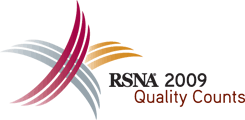
Abstract Archives of the RSNA, 2009
Ji Yeon Kim MD, Presenter: Nothing to Disclose
Seung Soo Lee MD, Abstract Co-Author: Nothing to Disclose
Jae Ho Byun MD, Abstract Co-Author: Nothing to Disclose
Seong Ho Park MD, Abstract Co-Author: Research Consultant, Infinitt Co, Ltd
Pyo Nyun Kim MD, Abstract Co-Author: Nothing to Disclose
Moon-Gyu Lee MD, Abstract Co-Author: Nothing to Disclose
To evaluate clinical factors which determine parenchymal enhancement at hepatobiliary phase of gadoxetic acid (Gd-EOB-DTPA) and gadobenate dimeglumine (Gd-BOPTA) enhanced MRI and their influence on the conspicuity of hepatocellular carcinoma (HCC) in patients with chronic liver disease (CLD).
We retrospectively evaluated 164 patients with CLD who underwent liver MRI using Gd-EOB-DTPA (n=82) or Gd-BOPTA (n=82). Non-enhanced and hepatobiliary phase (i.e. 20-min delay for Gd-EOB-DTPA; 1-hr and 3-hr delay for Gd-BOPTA) images were quantitatively evaluated. Relative parechymal enhancement (RPE) was calculated as (SNRHB phase - SNRnon-enhanced)/SNRnon-enhanced and was compared with clinical factors including presence of cirrhosis, age, serum bilirubin, serum creatinine, Child-Pugh score (CPS), MELD score, and renal function stage for each of Gd-EOB-DTPA and Gd-BOPTA groups. For a total of 61 HCCs (n=27 in Gd-EOB-DTPA group, n=34 in Gd- BOPTA group), lesion-to-liver CNR was calculated and compared with CPS. Statistical analysis was performed using the independent t-test, Pearson’s correlation, and univariate and multivariate linear regression analyses.
There was no significant difference in demographic and clinical factors between Gd-EOB-DTPA and Gd-BOPTA groups. For Gd-EOB-DTPA, RPE had a significant negative correlation with the presence of cirrhosis (P=.017), serum bilirubin (r=.323, P=.003), CPS (r=.472, P<.001), and MELD score (r=.347, P=.002). Among these factors, CPS (P<.001) was the significant independent factor. Regarding Gd-BOPTA, RPE at 1 hr and RPE at 3hr had a significant correlation with serum creatinine (r=.205, P=.065) and the presence of cirrhosis (P=.035), respectively. Lesion to liver CNR of HCC showed a significant negative correlation with CPS (r=0.411, P=.033) in the Gd-EOB-DTPA group but was not significantly correlated with CPS in the Gd-BOPTA group (p>0.06).
The parenchymal enhancement of Gd-EOB-DTPA is highly dependent on liver function, while that of Gd-BOPTA is influenced by both liver and kidney function. Poor liver function has a negative effect on the conspicuity of HCC on Gd-EOB-DTPA enhanced hepatobiliary phase MR imaging.
Our results suggest that poor liver function may offset the advantage of Gd-EOB-DTPA enhanced hepatobiliary phase imaging by diminishing the parenchymal enhancement and lesion conspicuity.
Kim, J,
Lee, S,
Byun, J,
Park, S,
Kim, P,
Lee, M,
Clinical Factors Influencing Parenchymal Enhancement at Hepatobiliary Phase MR imaging in Patients with Chronic Liver Disease: Comparison of Gd-EOB-DTPA and Gd-BOPTA. Radiological Society of North America 2009 Scientific Assembly and Annual Meeting, November 29 - December 4, 2009 ,Chicago IL.
http://archive.rsna.org/2009/8011215.html

